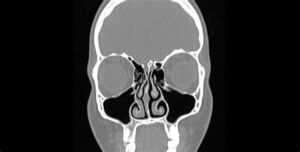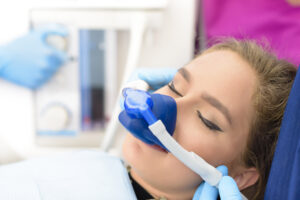Barnet Health Doctors
Contact
Hours
- Monday: 9:00am – 9:00pm
- Tuesday: 9:00am – 6:00pm
- Wednesday: 9:00am – 9:00pm
- Thursday: 9:00am – 9:00pm
- Friday: 9:00am – 5:00pm
Barnet Health Doctors, located in the vibrant town of Goshen, New York, is a leading dental institution dedicated to providing exceptional dental care to individuals and families in the community. With a commitment to oral health and patient satisfaction, the practice offers a comprehensive range of dental services tailored to meet the diverse needs of patients of all ages. Led by a team of skilled dental professionals, Barnet Health Doctors strives to deliver personalized care in a comfortable and welcoming environment.
Dental Services
Preventive Dentistry
- Comprehensive Examinations: Thorough dental assessments to evaluate oral health and detect any signs of dental issues.
- Professional Cleanings: Routine cleanings to remove plaque and tartar buildup, preventing gum disease and cavities.
- Fluoride Treatments: Application of fluoride to strengthen tooth enamel and reduce the risk of decay.
Restorative Dentistry
- Fillings: Treatment of cavities with tooth-colored composite fillings for a natural appearance.
- Crowns and Bridges: Custom-made crowns and bridges to restore damaged or missing teeth and improve functionality.
- Dental Implants: Permanent solutions for tooth replacement that mimic the look and feel of natural teeth.
Specialized Dental Care
Orthodontics
- Braces: Traditional braces and clear aligners to straighten misaligned teeth and correct bite issues.
- Retainers: Custom-fitted retainers to maintain the results of orthodontic treatment and prevent relapse.
Endodontics
- Root Canal Therapy: Treatment to remove infected or damaged pulp from within the tooth and restore its health.
- Apicoectomy: Surgical procedure to remove infected tissue from the root tip and seal the root canal.
Patient Care
Personalized Treatment Plans
- Individualized Consultations: Detailed discussions to understand each patient’s unique dental needs and goals.
- Customized Care: Tailoring treatment plans to address specific concerns and preferences.
Comfort and Convenience
- Welcoming Environment: Creating a friendly and inviting atmosphere to help patients feel at ease during their visits.
- Pain Management: Utilizing gentle techniques and effective anesthesia to minimize discomfort during procedures.
Sinus Evaluation
Sinus evaluation refers to a medical examination or diagnostic procedure used to assess the health and function of the paranasal sinuses, which are air-filled cavities located within the bones of the skull. This evaluation is typically performed to diagnose sinus-related conditions, such as sinusitis, nasal polyps, sinus cysts, or structural abnormalities within the sinuses. Here's an overview of sinus evaluation:
- Indications:
- Sinus evaluation may be indicated for individuals experiencing symptoms suggestive of sinus problems, such as nasal congestion, facial pain or pressure, headaches, postnasal drip, or reduced sense of smell.
- It may also be recommended for individuals with chronic or recurrent sinus infections, allergies, asthma, or other respiratory conditions that may affect sinus health.
- Clinical Assessment:
- The evaluation often begins with a thorough medical history and physical examination by a healthcare provider, such as an otolaryngologist (ear, nose, and throat specialist).
- The healthcare provider will inquire about the patient's symptoms, medical history, medications, allergies, and any previous sinus-related treatments or surgeries.
- A physical examination may include inspection of the nasal passages and sinuses using a nasal speculum and a light source to assess for signs of inflammation, swelling, polyps, or other abnormalities.
- Diagnostic Tests:
- Imaging Studies: If further evaluation is needed, imaging studies such as computed tomography (CT) scans or magnetic resonance imaging (MRI) may be performed to obtain detailed images of the sinuses and assess their anatomy, structure, and any abnormalities.
- Nasal Endoscopy: In some cases, a nasal endoscopy may be performed to visualize the nasal passages and sinuses using a thin, flexible tube with a light and camera (endoscope) inserted into the nostrils. This allows for a detailed examination of the sinuses and detection of any abnormalities or pathology.
- Allergy Testing: Allergy testing may be recommended for individuals with suspected allergic rhinitis or sinusitis to identify specific allergens that may be contributing to sinus symptoms.
- Interpretation of Results:
- The results of the sinus evaluation, including imaging studies and diagnostic tests, are interpreted in conjunction with the patient's clinical history and symptoms to establish a diagnosis and develop an appropriate treatment plan.
- Common diagnoses that may be made based on sinus evaluation findings include acute or chronic sinusitis, nasal polyps, sinus cysts, deviated septum, or other structural abnormalities.
- Treatment:
- Treatment for sinus-related conditions depends on the underlying cause and may include a combination of medications (such as antibiotics, corticosteroids, decongestants, or antihistamines), nasal saline irrigation, nasal corticosteroid sprays, allergy management, or surgical intervention (such as sinus surgery or polypectomy) in severe or refractory cases.
- Lifestyle modifications, such as avoiding allergens, optimizing nasal hygiene, humidifying the air, and avoiding tobacco smoke, may also be recommended to help manage sinus symptoms and improve overall sinus health.
Sinus evaluation plays a crucial role in diagnosing and managing sinus-related conditions, allowing healthcare providers to tailor treatment plans to individual patient needs and optimize outcomes. If you are experiencing symptoms suggestive of sinus problems or have concerns about your sinus health, it's important to consult with a qualified healthcare provider for evaluation and appropriate management.
Anesthesia
Dental anesthesia, also known as dental anesthetic or local anesthesia, is a medication used by dentists to numb specific areas of the mouth and surrounding tissues during dental procedures. It helps to alleviate pain and discomfort, allowing the dentist to perform treatments effectively and comfortably for the patient.
Here's how dental anesthesia typically works:
- Application: Dental anesthesia is usually administered via injection directly into the gums or tissues near the area being treated. Before administering the injection, the dentist may apply a topical anesthetic gel or spray to numb the surface of the skin and minimize the discomfort of the injection.
- Numbing Effect: Once injected, the anesthesia begins to take effect within a few minutes, temporarily blocking nerve signals in the affected area and preventing the sensation of pain. The patient may feel a tingling or numbing sensation as the anesthesia takes effect, but they should not experience any pain during the procedure.
- Duration: The duration of dental anesthesia varies depending on the type and concentration of the anesthetic used, as well as individual factors such as metabolism and sensitivity to the medication. In general, the effects of local anesthesia typically last for several hours, providing adequate pain relief during and after the dental procedure.
- Types of Anesthesia: There are different types of dental anesthesia available, including lidocaine, articaine, mepivacaine, and prilocaine, among others. The dentist will select the most appropriate type of anesthesia based on the specific needs of the patient and the nature of the dental treatment.
- Safety: Dental anesthesia is considered safe when administered by trained dental professionals in appropriate doses and concentrations. However, like any medication, it carries some risks and potential side effects, such as numbness, swelling, bruising, or allergic reactions. Patients should inform their dentist about any allergies, medical conditions, or medications they are taking before receiving anesthesia.
Dental anesthesia plays a crucial role in ensuring patient comfort and safety during dental procedures, allowing dentists to perform treatments efficiently and effectively. By numbing the affected area and minimizing pain, anesthesia helps to reduce anxiety and fear associated with dental visits, making the experience more pleasant for the patient. Patients should feel free to discuss any concerns or questions they have about dental anesthesia with their dentist before undergoing treatment.




